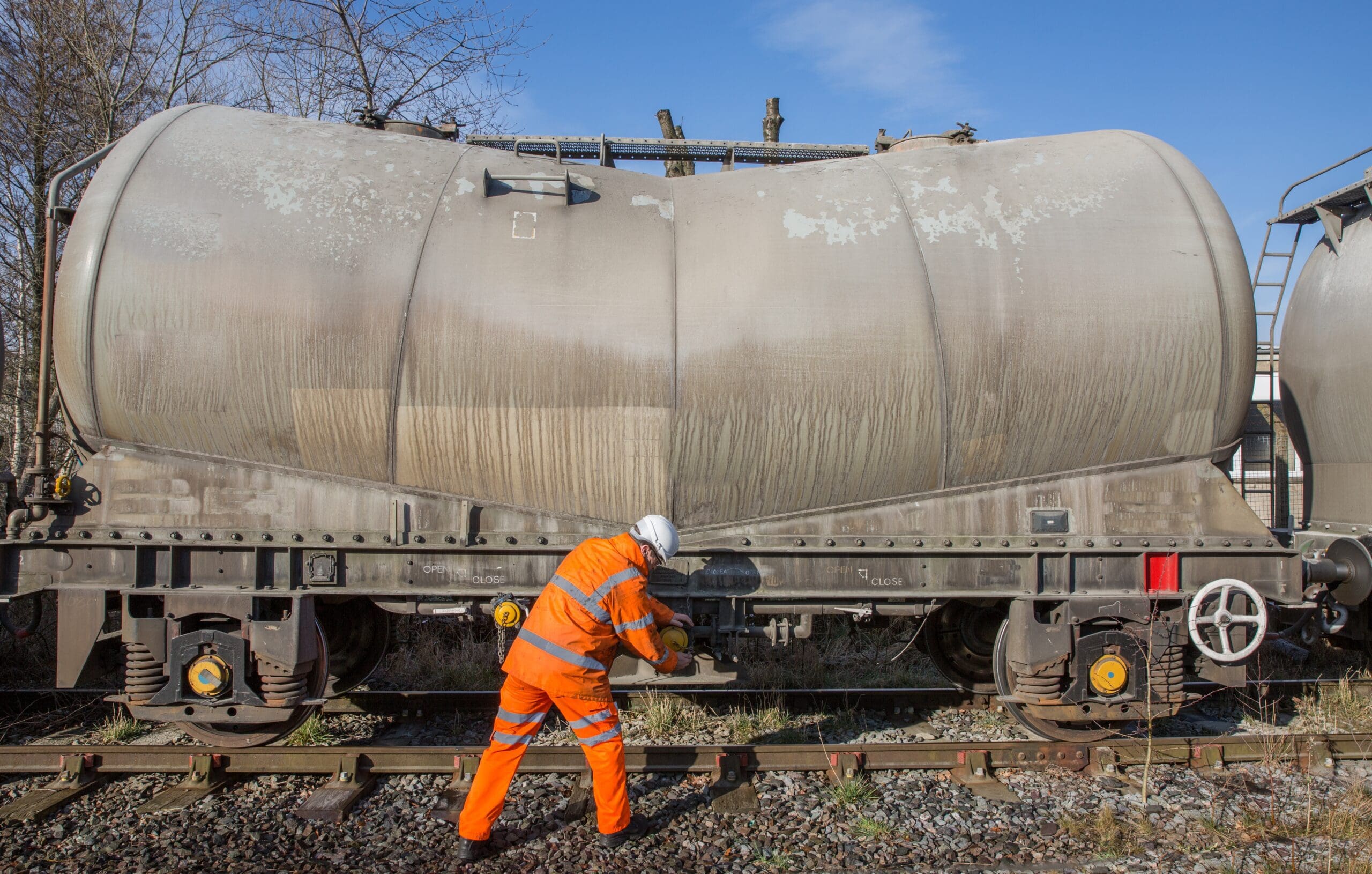Chronic Lymphocytic Leukemia Caused by Railroad Exposure
Railroad workers are at a greater risk for developing Chronic Lymphocytic Leukemia (CLL) because of their day-to-day exposure to benzene, butadiene, the exhaust of diesel and pesticides. These chemicals are classified as group one cancerous substances. CLL has also been linked with exposure to herbicides for a long time such as creosote and weed killers.
Benzene and Butadiene
Benzene and 1,3butadiene are both volatile organic compounds (VOCs) that are emitted into the air as a result of numerous natural and human-caused processes. They can be absorbed through the skin and the lungs, or inhaled directly. They are both believed to be carcinogenic and have also been shown to cause leukemias. They also harm DNA and hinder cell growth. Butadiene and benzene both are part of a group of chemicals that are considered to be Group One carcinogens by the International Agency for Research on Cancer (IARC).
Both benzene and butadiene can be found in diesel exhaust. Diesel exhaust is an everyday exposure for railroad employees who maintain and operate trains. In addition, they are also exposed to benzene, butadiene and other chemicals when their train burns and releases toxic smoke.
Both benzene as well as butadiene are degraded in the air by reacting with oxygen or nitrogen. This process is assisted by the opening and closing of carbon-carbon bonds inside the molecules. This chemistry is accelerated by moisture, temperature and light. The degrading process of benzene is further accelerated by the presence of heavy metals and other contaminants. These reactions can result in the formation of new molecules which are less toxic than the chemical that was originally. The exposure to benzene or butadiene occurs through inhalation and is the primary route for exposure.
Diesel Exhaust
Diesel exhaust contains dozens of toxic chemicals. The most prominent of these is the diesel particulate matter (DPM). aml caused by railroad how to get a settlement are less than 2.5 microns in size and easily absorbed into lung where they are liquid and can cause asthma, wheezing, inflammation and lung damage. Excessive exposure to diesel exhaust can also aggravate lung disease and heart disease.
Benzene is also found in diesel exhaust. Benzene, a colorless gas that has a sweet scent is a by-product of crude oil. It is also a component in several diesel fuels. The vapors that come from benzene-containing cleansers employed in railroad shops expose workers to benzene. The chemical is found in the paints, thinners and adhesives that railroad carmen, locomotive machinists and electricians use to clean their equipment. They also soak rags in benzene containing solvents such as Safety-Kleen part washers to wash dirt from their hands and equipment.
DPM is a microbial mixture of gases and fine airborne particulates produced by the combustion of diesel fuel in an internal-combustion engine. The International Agency for Research on Cancer is an agency of the World Health Organization, has determined that exposure to DPM can cause lung cancer, as well as other negative health impacts. DPM is comprised of soot, carbon black and metallic abrasion particles polycyclic hydrocarbons, organic compounds, and metallic ash.
Asbestos
Railroad workers are often affected by cancer or other chronic diseases that are linked to their work-related exposure to toxic substances such as asbestos. Mesothelioma lawsuits against railroad companies who exposed workers to carcinogens might help in holding responsible businesses and their former employees accountable.

Asbestos was extensively used in the railroad industry prior to when it was outlawed in the 1970s, and a lot of railway workers were exposed to the toxic substance while working. Asbestos can be found in pipes, boilers insulation around locomotives cabooses, and other railroad infrastructure such as coal tar, creosote, and soot-covered trackwork.
The exposure to these chemicals has been linked to a range of cancers and health problems, including mesothelioma and lung disease heart disease, skin cancer kidney cancer, and non-Hodgkin's lymphoma. Many of these illnesses are difficult to diagnose and treat, leaving sufferers with high medical costs and a decrease in income and earning potential.
An attorney for mesothelioma can examine the history of a victim's chemical exposure to determine whether they're able to file an FELA suit. A lawsuit against a railroad firm can be filed in either a state or federal court. Victims can also file a private mesothelioma suit against manufacturers of asbestos-containing products. FELA lawsuits are a bit more complicated and should be handled by an attorney with expertise in this area of law.
Pesticides
Many workers on the railroad are exposed to pesticides that are used on railroad tracks and at railway crossings to control the growth of vegetation and to prevent fires. These chemicals can trigger a variety of health problems such as cancer, non-Hodgkin lymphoma and asthma, along with neurologic diseases. An acute exposure can trigger nausea, headaches, muscle dizziness and twitching. Exposure for a long period of time can result in rashes, skin burning and respiratory issues. Pesticides can have long-lasting effects.
Numerous studies have demonstrated that those who work in the railroad industry as conductors, brakemen or car men, as well as track workers, are at an increased risk of developing CLL. The risk increases as the frequency of exposure to pesticides rises. Recent research has found that those who have agriculture as their primary occupation are at the most risk. The risk of developing CLL were higher for those who had been exposed to pesticides in all three groups of application (OR1-SD increase = 1.16; 95% CI = 1.03 to 1.59) than those not exposed to pesticides. This study supports earlier studies linking farming exposures to other occupational exposures.
